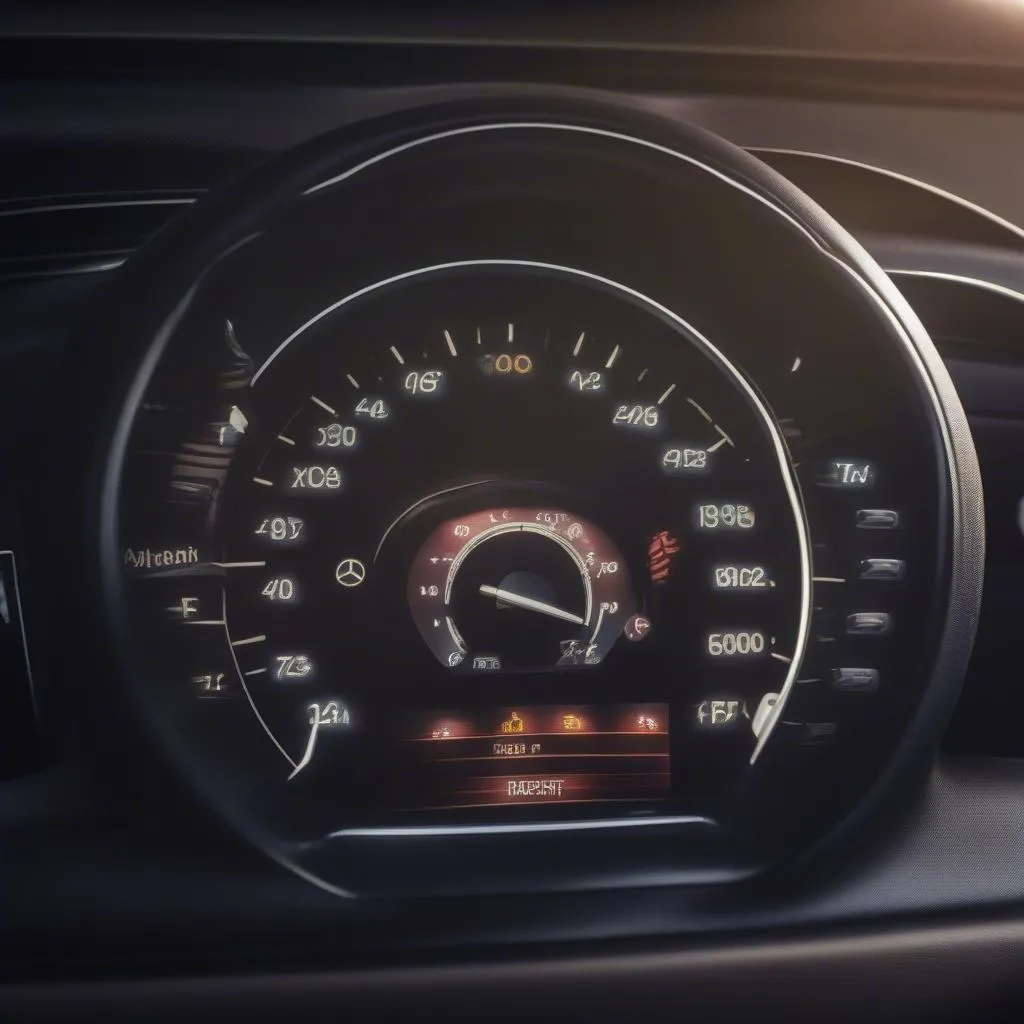As an automotive electrical technician, you’re likely no stranger to the complexities of diagnosing issues in modern vehicles. Gone are the days of simple mechanical systems; today’s cars are rolling computer networks, and understanding their communication protocols is crucial. This is where the “Mercedes scan position statement” comes in.
This term, though seemingly simple, holds significant weight in the world of Mercedes-Benz diagnostics. It refers to the specific configuration of the vehicle during a diagnostic scan, crucial for obtaining accurate results and identifying fault codes effectively. Think of it like this: you wouldn’t examine an engine while it’s running at full throttle, right? Similarly, the scan position statement sets the stage for a thorough and precise diagnostic session.
Deciphering the Importance of Scan Position
Why is the scan position statement so critical? Imagine this: you’re trying to pinpoint an intermittent electrical issue in a Mercedes-Benz S-Class. You connect your diagnostic tool, but the scan yields inconsistent results, leaving you scratching your head. The culprit could very well be an incorrect or overlooked scan position.
The scan position statement dictates several factors, including:
- Ignition status: ON, OFF, or specific positions in between
- Battery voltage: Ensuring stable voltage during the scan
- Transmission gear: Park, Neutral, or Drive
- Other modules: Activating or deactivating specific systems like air conditioning or lights
These parameters directly impact the communication between your diagnostic tool and the various control units (ECUs) within the vehicle.
“Failing to adhere to the correct scan position is like performing surgery with the wrong instruments,” says Dr. Markus Kohler, a renowned automotive electronics engineer. “You might get a result, but it’s likely to be inaccurate and potentially disastrous.”
 Mercedes Diagnostic Port
Mercedes Diagnostic Port
Navigating the World of Scan Positions
Mercedes-Benz provides detailed documentation outlining the appropriate scan position for different diagnostic procedures. These guidelines can vary depending on the specific model, year, and the system you’re trying to diagnose.
Here are some scenarios where the scan position statement becomes particularly crucial:
- Programming and coding: When flashing new software or adjusting control unit parameters, the scan position ensures stable communication and prevents data corruption.
- Troubleshooting complex electrical faults: Isolating intermittent issues often requires specific scan positions to replicate the fault conditions and observe live data streams.
- Performing guided diagnostics: Many advanced diagnostic tools offer guided routines that rely on the correct scan position to provide step-by-step troubleshooting instructions.
Common Questions About Mercedes Scan Position Statements:
Q: Where can I find the correct scan position statement for my Mercedes?
A: The most reliable source is the official Mercedes-Benz workshop information system (WIS). This subscription-based service provides comprehensive technical documentation, including scan position requirements for various procedures.
Q: Can I damage my car by using an incorrect scan position?
A: While unlikely, using an incorrect scan position could potentially lead to misdiagnosis or, in rare cases, communication errors that temporarily disrupt vehicle systems. Always double-check the required scan position before initiating any diagnostic procedures.
Q: My diagnostic tool doesn’t ask for a scan position. Should I be concerned?
A: Some aftermarket diagnostic tools automatically detect or bypass the need for a manual scan position input. However, it’s always good practice to verify compatibility and accuracy with your specific vehicle model.
 Mercedes-Benz Diagnostic Software
Mercedes-Benz Diagnostic Software
Partnering with the Right Diagnostic Tools
Having access to high-quality diagnostic equipment plays a significant role in successfully navigating the world of Mercedes scan position statements. Companies like Cardiagtech offer a range of professional-grade diagnostic tools tailored for Mercedes-Benz vehicles. Their user-friendly interfaces and comprehensive software often incorporate features like:
- Automatic scan position detection: Simplifying the diagnostic process, especially for less experienced technicians.
- Guided diagnostic routines: Providing step-by-step instructions and automatically setting the required scan position at each stage.
- Detailed technical information: Offering on-screen access to wiring diagrams, component locations, and other essential data.
Conclusion
Understanding and correctly applying the Mercedes scan position statement is paramount for accurate diagnostics and effective troubleshooting. By treating this seemingly simple term with the respect it deserves, you unlock a deeper level of diagnostic capability and ensure your ability to tackle even the most challenging electrical gremlins in any Mercedes-Benz vehicle.
For personalized guidance and access to cutting-edge diagnostic solutions for your Mercedes-Benz, connect with the experts at CARDIAGTECH. Their team of specialists can provide tailored support and equip you with the tools needed to conquer any diagnostic challenge.


